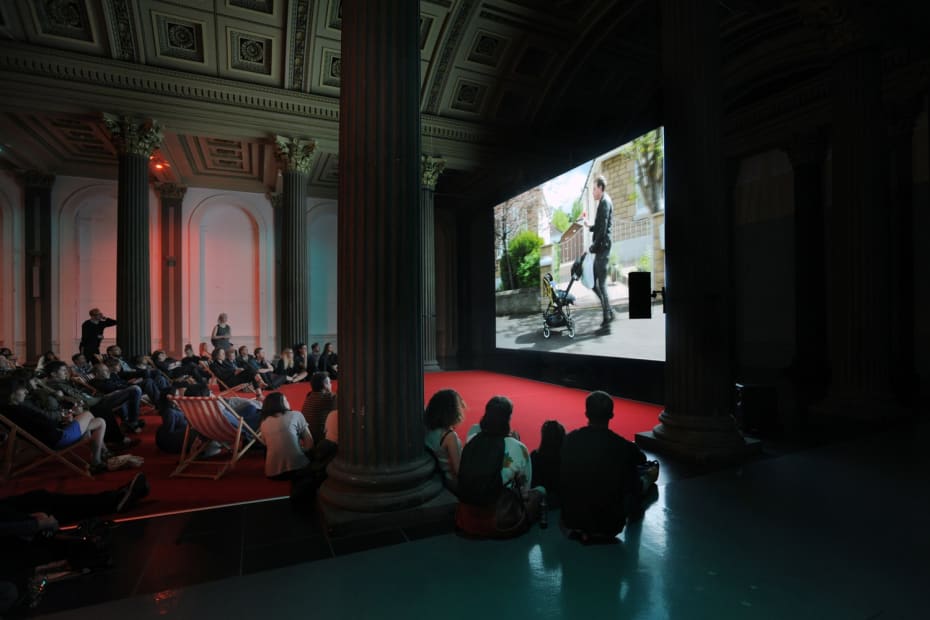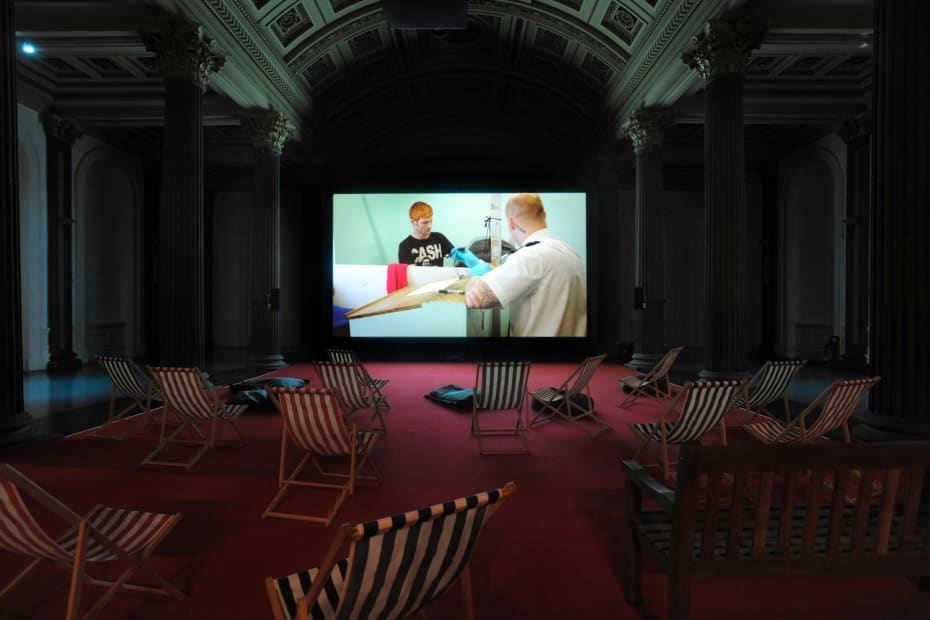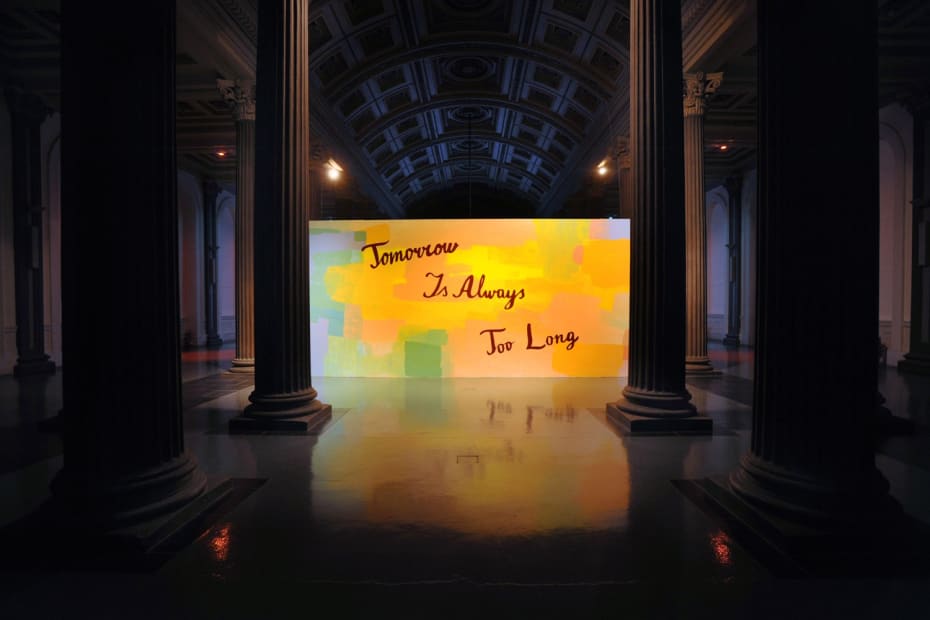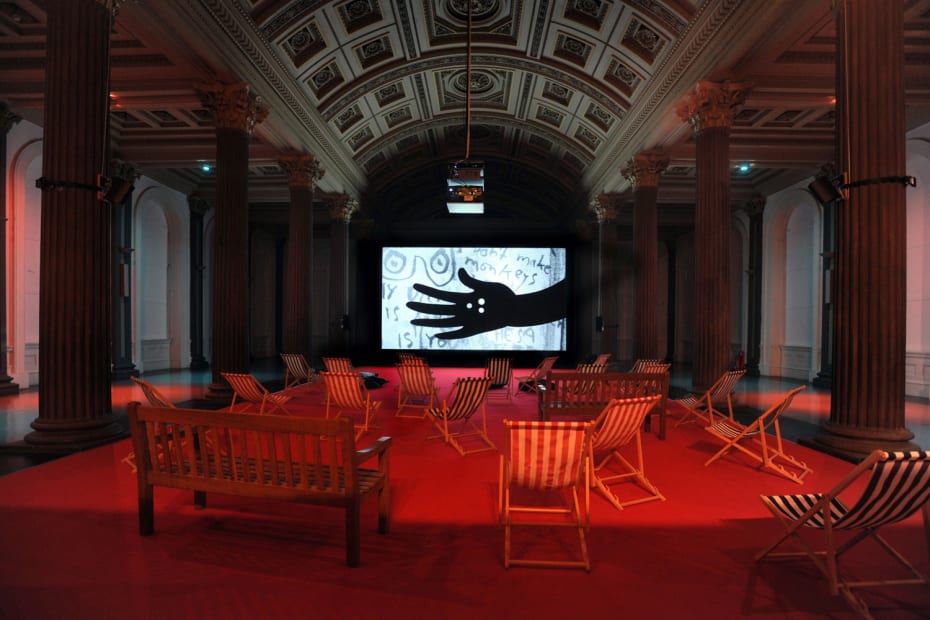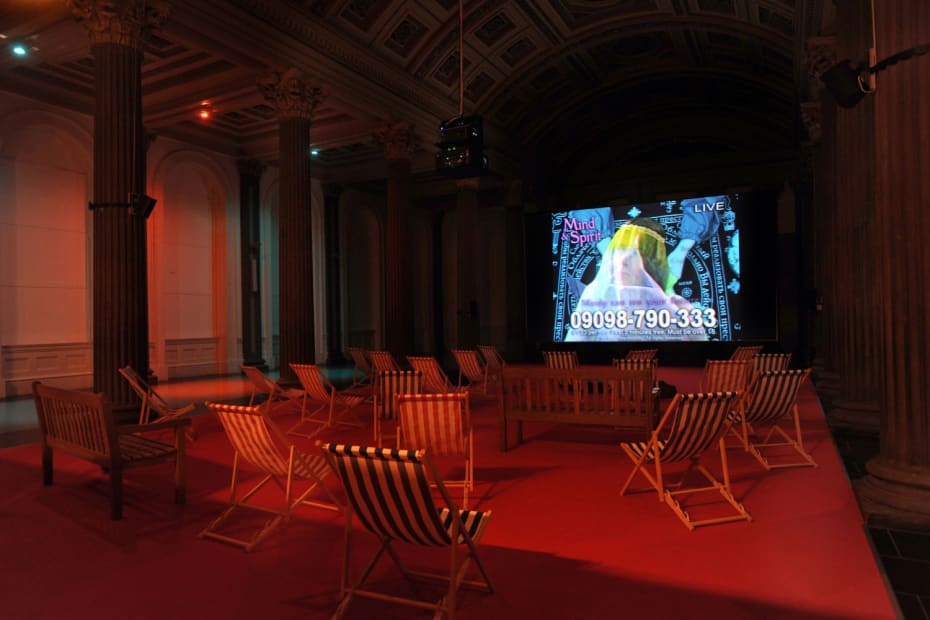Tomorrow Is Always Too Long, a new film by Phil Collins, is a love letter to Glasgow, Scotland’s largest city. Commissioned by The Common Guild for Festival 2014, it was developed over the course of a year with various local communities and paints an idiosyncratic portrait of a place as seen through the scope of human experience, from birth and childhood through education and the criminal justice system to old age.
At the heart of the film is a six-song cycle by musician Cate Le Bon. Le Bon’s skewed and intimate pop gems are interpreted by non-professional singers, ranging from a 10-year old girl to an 83-year old man. Accompanied by the Royal Scottish National Orchestra and filmed in their everyday environments, including an antenatal class, a high school, HM Prison Barlinnie, and a social club for the elderly, the performances play out as kaleidoscopic vignettes in a larger modern day city symphony.
Musical sequences, shot by acclaimed cinematographer Michael McDonough, are interspersed with public-access style broadcasts filmed in 1960s’ college TV studio. They star a cast of Glaswegians from every walk of life whom Collins met and befriended: socially engaged pensioners, burlesque animal rights activists, street poets, market traders, Elvis impersonators, club kids, and elderly star-crossed lovers.
The third strand comprises a series of intricate short animations, created by Matthew Robins and soundtracked by Barry Burns, which follow a group of characters duringa night out on the town. A new element, presented for the first time in this exhibition, is a track by Golden Teacher, local voodoo-rave sensations, filmed at Langside Hall and shrouded in mystery up until now.
‘Music was always going to be an essential part of any film about Glasgow. It’s one of those cities where music seems to run in the water, like Manchester or Berlin – turn on a tap and it sings,’ says Collins. ‘For me, there’s an undeniable transformative power in a pop song, an ability to tilt even the most mundane situation into the realm of the extraordinary and of heartbreak. It’s a form of artifice in some ways more authentic than “real” emotion. So I wanted to imagine the real through the frame of music, and make something where song emerges from a living, breathing, working space. If the film can be described to function as an update on the idea of a city symphony, it does very literally so, though the voices of its inhabitants.’
The improbable lovechild of musicals and documentary, late-night television and silhouette animation, Tomorrow Is Always Too Long defies classification and embarks on an immersive, hypnotic trip into the heart of the city.
